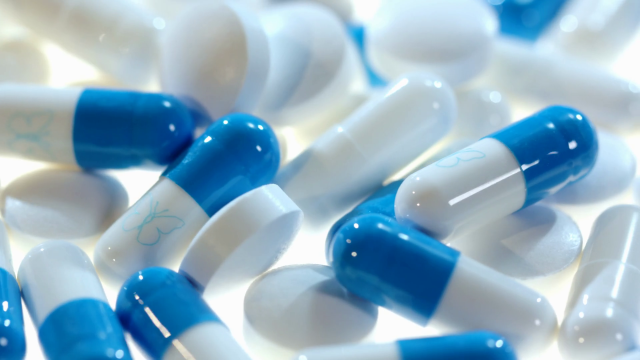https://www.accessnewswire.com/newsroom/en/healthcare-and-pharmaceutical/d-bal-max-review-2025-best-dianabol-steroid-alternative-for-muscle-gr-1041956
https://www.globenewswire.com/news-release/2025/06/15/3099411/0/en/D-Bal-Max-2025-Exploring-the-Science-and-Safety-behind-a-Popular-And-Legal-Dianabol-Steroid-For-Muscle-Growth.html
https://finance.yahoo.com/news/d-bal-max-2025-exploring-111100487.html
https://www.deccanherald.com/dhsponsored-health/d-bal-max-reviews-2025-legal-dianabol-or-steroids-alternative-dbal-max-v2-that-actually-works-3436882
https://d-bal-max.jimdosite.com/
https://d-bal-max-reviews-2025.jimdosite.com/
https://d-bal-max.mywebselfsite.net/
https://d-bal-max-version-2.mywebselfsite.net/
https://sites.google.com/view/d-balmax/
https://site-g3083nk03.godaddysites.com/
https://d-bal-max-capsules.blogspot.com/2025/06/d-bal-max.html
https://dbalmaxtry.blogspot.com/2025/06/d-bal-max-how-to-use-it-safely-dosage.html
https://colab.research.google.com/drive/160elzEVklec2njde2JwFVSU4lma4IOUA
https://knowt.com/note/72fe0120-7116-4602-b80a-1b69a8fd13b5/D-Bal-Max-What-You-Should-KnowReal-Res
https://nas.io/d-bal-max/challenges/dbal-max-why-men-are-choosing-it-daily-benefits-side-effects-what-you-should-know
https://www.supramania.com/threads/d-bal-max-real-reviews-how-d-bal-max-transformed-my-physique.296820/
https://www.supramania.com/threads/d-bal-max-vs-test-boosters-which-builds-more-muscle.296832/
https://crazzystore.s3.amazonaws.com/health/slimorol.html
https://www.globenewswire.com/news-release/2025/06/15/3099411/0/en/D-Bal-Max-2025-Exploring-the-Science-and-Safety-behind-a-Popular-And-Legal-Dianabol-Steroid-For-Muscle-Growth.html
https://finance.yahoo.com/news/d-bal-max-2025-exploring-111100487.html
https://www.deccanherald.com/dhsponsored-health/d-bal-max-reviews-2025-legal-dianabol-or-steroids-alternative-dbal-max-v2-that-actually-works-3436882
https://d-bal-max.jimdosite.com/
https://d-bal-max-reviews-2025.jimdosite.com/
https://d-bal-max.mywebselfsite.net/
https://d-bal-max-version-2.mywebselfsite.net/
https://sites.google.com/view/d-balmax/
https://site-g3083nk03.godaddysites.com/
https://d-bal-max-capsules.blogspot.com/2025/06/d-bal-max.html
https://dbalmaxtry.blogspot.com/2025/06/d-bal-max-how-to-use-it-safely-dosage.html
https://colab.research.google.com/drive/160elzEVklec2njde2JwFVSU4lma4IOUA
https://knowt.com/note/72fe0120-7116-4602-b80a-1b69a8fd13b5/D-Bal-Max-What-You-Should-KnowReal-Res
https://nas.io/d-bal-max/challenges/dbal-max-why-men-are-choosing-it-daily-benefits-side-effects-what-you-should-know
https://www.supramania.com/threads/d-bal-max-real-reviews-how-d-bal-max-transformed-my-physique.296820/
https://www.supramania.com/threads/d-bal-max-vs-test-boosters-which-builds-more-muscle.296832/
https://crazzystore.s3.amazonaws.com/health/slimorol.html
https://www.accessnewswire.com/newsroom/en/healthcare-and-pharmaceutical/d-bal-max-review-2025-best-dianabol-steroid-alternative-for-muscle-gr-1041956
https://www.globenewswire.com/news-release/2025/06/15/3099411/0/en/D-Bal-Max-2025-Exploring-the-Science-and-Safety-behind-a-Popular-And-Legal-Dianabol-Steroid-For-Muscle-Growth.html
https://finance.yahoo.com/news/d-bal-max-2025-exploring-111100487.html
https://www.deccanherald.com/dhsponsored-health/d-bal-max-reviews-2025-legal-dianabol-or-steroids-alternative-dbal-max-v2-that-actually-works-3436882
https://d-bal-max.jimdosite.com/
https://d-bal-max-reviews-2025.jimdosite.com/
https://d-bal-max.mywebselfsite.net/
https://d-bal-max-version-2.mywebselfsite.net/
https://sites.google.com/view/d-balmax/
https://site-g3083nk03.godaddysites.com/
https://d-bal-max-capsules.blogspot.com/2025/06/d-bal-max.html
https://dbalmaxtry.blogspot.com/2025/06/d-bal-max-how-to-use-it-safely-dosage.html
https://colab.research.google.com/drive/160elzEVklec2njde2JwFVSU4lma4IOUA
https://knowt.com/note/72fe0120-7116-4602-b80a-1b69a8fd13b5/D-Bal-Max-What-You-Should-KnowReal-Res
https://nas.io/d-bal-max/challenges/dbal-max-why-men-are-choosing-it-daily-benefits-side-effects-what-you-should-know
https://www.supramania.com/threads/d-bal-max-real-reviews-how-d-bal-max-transformed-my-physique.296820/
https://www.supramania.com/threads/d-bal-max-vs-test-boosters-which-builds-more-muscle.296832/
https://crazzystore.s3.amazonaws.com/health/slimorol.html
0 Comments
0 Shares
78 Views
0 Reviews











